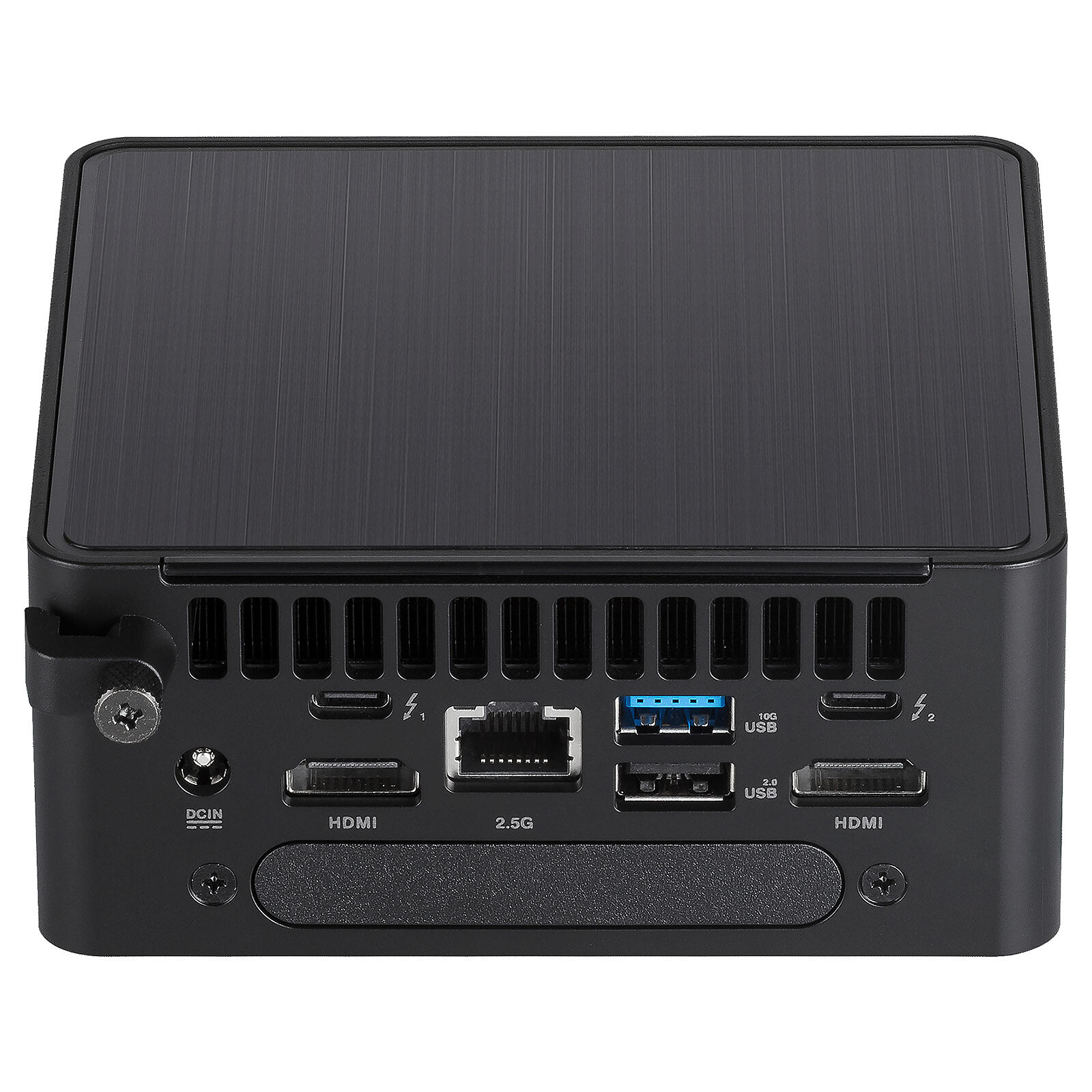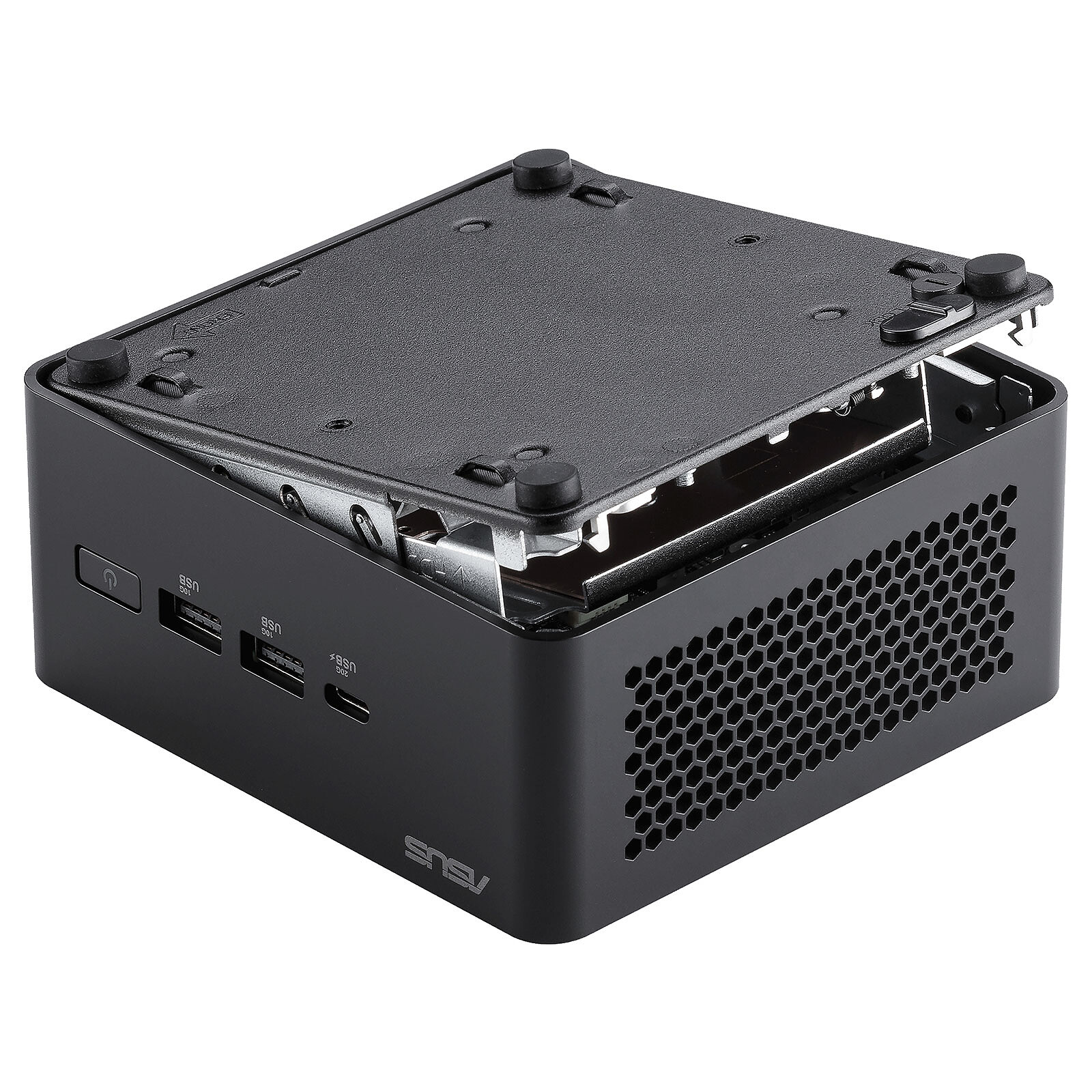Despite the miniaturization of desktop computers and their increasingly attractive design, placing such a computer case in a modern office so that it does not take up space and harmonizes with its equipment is not an easy matter. Two conflicting requirements come to the fore: that the cabinet does not get in the way, but that frequently used ports are easily accessible. Many solutions are based on the fact that the monitor must always be on the desk. The solution can be a miniature PC, for which there is always a place on the table somewhere, or you can fix the miniature desktop on the back wall of the monitor. The Mini PC can also be used in various devices, such as information boards, vending machines and the like.
Mini PC with the name NUC was produced by Intel and currently this proven design format has been taken over by ASUS and launched the NUC 14 Pro. I tested a model with an Intel Core Ultra 7 165 H processor, 16 GB DDR5 and a 512 GB NVMe drive.
Despite the very small dimensions of the minidesktop case, it has much better conditions for cooling components than in a notebook, which has the same volume, but the battery, display and keyboard take up space in it. The ASUS NUC 14 Pro case can be opened after releasing the lockable latch on the bottom wall. You get access to a slot that can accommodate a 2.5-inch hard drive, or an SSD designed for this type of slot, as well as an NVMe drive and two RAM modules, so you can relatively easily expand the RAM or replace the SSD in the M slot .2 for the higher capacity model. To be precise, there are two M2 drive slots on the PCB, one for the 80mm module and the other for the 42mm module for M key SSDs. There is also a slim version that does not have a slot for a 2.5-inch drive. The computer is powered from an external source. The package also includes a VESA holder for mounting a mini PC on the back of the monitor. I recommend such an assembly, it eliminates fan noise at higher loads. At normal load, the fan noise does not exceed 30 dB.

The Intel Core Ultra 7 165H (13th generation Meteor Lake) chipset includes a 16-core processor, with 6 P (Performance) cores for computationally intensive tasks, 8 Efficient cores for normal tasks, and two Low Power Efficient cores for background tasks . The maximum turbo frequency is 5 GHz, at which time the TDP rises from 28 to 115 W. Of course, the processor is only able to provide this performance for a short time for cooling purposes.
The processor includes not only Intel Arc Graphics, but also an NPU, i.e. a hardware accelerator for calculations related to AI, machine learning and neural networks. The NPU relieves the processor especially during long-term and not too intense loads, for example when removing ambient noise or blurring the background during video calls and the like. Of course, it depends on the specific application how the NPU performance can be used. Currently, NPUs in Intel processors support OpenVINO, WindowsML, DirectML and ONNX RT frameworks. Wi-Fi 6E and bluetooth 5.3 wireless communication is ensured by the Intel AX211 card. The antennas are under the upper plastic cover. With the help of TaskFirst, the user can customize the distribution of the available bandwidth of the Internet connection. It can distribute bandwidth evenly among all tasks or prioritize specific activities.

I have to praise the connector equipment. On the front are two USB 3.3 Gen2 Type A connectors and a USB 3.2 Gen 2×2 Type C connector. On the back you will find two Thunderbolt 4 connectors, two HDMI 2.1 connectors and two more USB-A connectors, one Type 2.0 and the other 3.2 Gen2.
The computer usage scenarios are defined by the integrated graphics, so it is not very suitable for very demanding graphics applications. On the other hand, when equipped with sufficient memory capacity, it can also handle demanding local analyzes in Excel over tables containing tens of millions of data. I tested the computer with various analytical applications, which were sometimes able to turn the cooling fan to higher speeds. In the Cinebench 2024 synthetic benchmark test, the ASUS NUC 14 Pro achieved 958 points in the multi-core test and 111 points in the Single Core test. In the 3D Mark benchmark Steel Nomad Light, the tested computer achieved a score of 2402 points. The frame rate during the test was 17.79 fps.
The chipset supports the Intel vPro Enterprise platform, allowing for simplified remote management, which, along with a three-year warranty, will be appreciated by business users. Intel One-Click Recovery enables operating system recovery to be activated without the need for physical access to a device equipped with Intel Active Management Technology (AMT). Intel Remote Platform Erase (RPE) technology allows user and company data to be securely erased from a device using a remote command. Intel 13th generation processors also feature Local Platform Erase (LPE) technology, which provides businesses that do not use remote computer management with an equally secure method of erasing data. Telemetry recording via Intel Platform Service Record technology helps with optimization.
PROS, CONS:
+ Performance, upgrade option, connectivity
– Nothing important
PARAMETERS:
Processor: Intel Core Ultra 7 165 H 3.8 GHz; memory: 16 GB DDR5 5600 MTS, 512 GB NVMe; graphics: integrated Intel Arc Graphics; connectivity: Wi-Fi 6E, bluetooth 5.3; operating system: Windows 11 Pro; connectors: front: 1× USB 3.2 Gen2×2 Type C, 2× USB 3.2 Gen2 Type A, rear 2× Thunderbolt 4 Type2-C, 1× USB 3.2 Gen2 Type-A, 1× 2.0 Type-A, 2× HDMI 2.1, RJ-45 LAN; dimensions: 117 × 112 × 54 mm; weight 750 g
Price: from 679 EUR (barebone version without RAM, SSD and OS)
EVALUATION: 9/10
Source: www.nextech.sk


